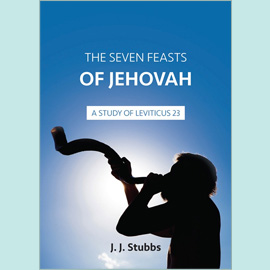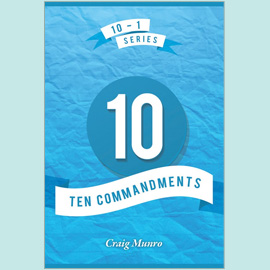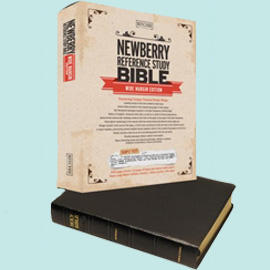The Curtains – Protecting Holiness (Ex 26.1-14)
The sheets that draped over the Tabernacle are called "curtains". The first curtain was made of white linen interwoven with blue, purple, and scarlet thread. Cherubim were stitched into the material. Above it was another covering of goats' hair spun by the wise-hearted women, followed by another covering of rams' skins dyed red, and finally a curtain of skins from a creature that may have been a porpoise or dugong.
The three coverings were designed to protect the Tabernacle. The outer skin was waterproof and the other two layers provided further protection. The inner curtain however was designed to beautify. While it may be that only God was intended to "see" its beauties, it is preferable to view them as designed to be seen by the priests as they ministered within the Tabernacle. If the boards were in a lattice arrangement this would have been possible.
Although the curtains may have looked like four large sheets of fabric, in fact they were all composed of smaller parts joined together. The first curtain was composed of 10 mini-sheets (28 x 4 cubits). They were sown together into two large sheets each composed of 5 parts. The two large sections were then joined by clasps. These golden clasps ("taches") hooked through loops of blue that were attached to the end of the curtain pieces. The fact that the sheets could be taken apart made them easier to carry. When the curtains were transported they could be unhooked and folded away. The curtain of goats' hair was longer than the first curtain and was designed to drape down to the wilderness floor at the rear and sides of the Tabernacle. It was folded back at the entrance. There is not much detail about how the final two coverings were made. Presumably they consisted of individual skins or hides stitched together.
The exterior curtains were designed to protect the holy vessels and the beautiful inner curtain. God ever protects that which is of value to Him.
The Boards – Promoting Holiness (Ex 26.15-30)
The boards were the "hard shell" of the Tabernacle. These wooden uprights gave it its shape and structure. The boards ran along three sides of the Tabernacle – to the north and south and to the west. The east side was not boarded. A "door" (or screen) permitted entrance to the Holy Place and a further vail hung across the entrance to the Holy of Holies.¹ The roof was made of the coverings of the Tabernacle. There was no flooring. The desert floor was the surface on which the priests walked. Whether the boards were solid is not specified. Many think that they were a lattice-like structure of the sort depicted in some illustrations. The principal reason for thinking this is that the embroidery on the curtains and the cherubim would then be visible to the priests within the Tabernacle. If not they would be completely obscured by the boards on the inside and by the coverings from the outside. A lattice structure would also make the edifice lighter and more portable.
The boards had small tenons or rods that protruded from their base and these were inserted into silver bases with sockets. These enabled the boards to stand upright.
The Vail – Preserving Holiness (Ex 26.31-33)
The vail (AV spelling) hung between the Holy Place and the Holy of Holies. While usually the fine twined linen is mentioned first, followed by blue, purple and scarlet, in the vail the blue, purple and scarlet come first. So they may have been the dominant threads. Into it were woven representations of the cherubim. This is not the case at the door of the Tabernacle. But as the cherubim guarded the Garden of Eden after the Fall (Gen 3.24), so these angelic creatures guarded God's presence in the Tabernacle. The High Priest entered once a year on the Day of Atonement (Lev 16.2,12,15). There are indications that Moses, when he communicated with God directly, may have had special access (Num 7.89).
The Tabernacle – Portraying Christ
The unattractive exterior of the Tabernacle reminds us that the Lord Jesus when He "tabernacled" among us did not come in glory or power. There was in Him no "beauty that we should desire him" (Is 53.2). The beauty was internal. Inside the Tabernacle the white linen and coloured threads that speak of His attributes were visible to the priest.
The Tabernacle can also be viewed as a picture of the assembly. We can see that each board was secured in the sockets of silver. Silver in Scripture is often linked with purchase or the redemption of people or objects. Silver was a common form of currency and was used to "purchase" (a) Joseph (Gen 37.28) and (b) the Lord (Mt 26.15). Silver was the metal used when Israel bought its "freedom" and redeemed itself (Ex 30.11-16; 38.25). The vast amount of silver they contributed was the principal source of that used in the Tabernacle. So when we see the tenons inserted into the sockets rather than into the soil of the wilderness, we see that our place in the assembly is based on what God has done for us in the redemptive work of Christ.
The boards were all of course perfectly in line and stood in bases made of silver. We should be the same. The assembly's members should stand "shoulder to shoulder" and work in perfect harmony.
The vail was what stood between the priests and the presence of God. It preserved God's holiness by keeping man at a distance. Equally it was the vail through which the High Priest passed in order to gain admittance on the Day of Atonement. In Hebrews the vail is likened to the humanity of the Lord Jesus. It was because of His humanity and His sacrifice on the cross that we have been able to enter God's presence. After the Lord died the vail in Herod's temple was torn from the top to the bottom. God did the rending since the tear began at the top and went to the bottom. This tear does not signify any physical rending of the Lord's flesh. It signifies instead the opening of the way into God's presence.
To be continued.
¹ The "gate" of the Tabernacle gave entrance to the courtyard, the "door" gave entrance to the Tabernacle itself, and the "vail" gave entrance to the Holy of Holies.









